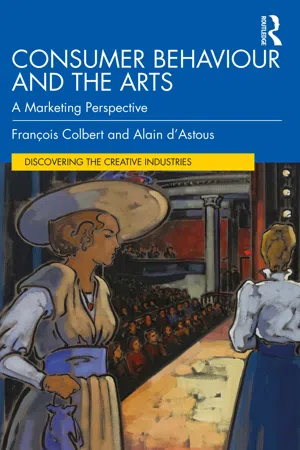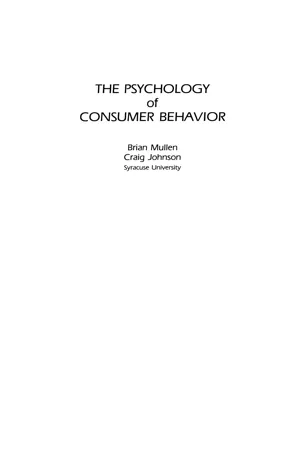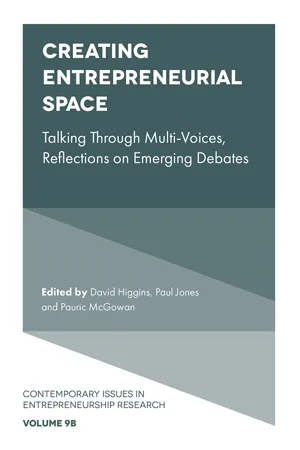Business
Perception in Decision Making
Perception in decision making refers to how individuals interpret and make sense of information to form judgments and choices. It involves the process of selecting, organizing, and interpreting information from the environment. In business, understanding perception is crucial as it influences how decisions are made, how risks are assessed, and how opportunities are identified.
Written by Perlego with AI-assistance
Related key terms
5 Key excerpts on "Perception in Decision Making"
- eBook - ePub
- Maher Asaad Baker(Author)
- 2024(Publication Date)
- tredition(Publisher)
Nurturing alignment between one's inner perceptual/perspectival orientations and the challenges of outer reality through continual refinement protects against defensiveness while promoting adaptability, resilience, and well-groundedness in changeable times. A balanced interplay fortifies psychological flexibility and existential health.Perception can be understood as the mental process through which we interpret and make sense of sensory information. It is our unique lens through which we perceive and understand the world. Our perceptions are influenced by a multitude of factors, including our upbringing, cultural background, personal experiences, and cognitive biases.Perceptions not only shape our understanding of the external world but also influence our internal landscape. They can color our emotions, thoughts, and beliefs, shaping our attitudes and behaviors. However, it is important to recognize that perceptions are not universal truths but rather subjective interpretations of reality.Perspective: The Power to Shift Our ViewPerspective, on the other hand, refers to the particular vantage point from which we view the world. It encompasses our beliefs, values, and assumptions, which in turn shape our perceptions. Our perspectives act as filters through which we process information, determining what we pay attention to and how we interpret it.While our perspectives are influenced by various external and internal factors, they are not fixed or immutable. We can expand our perspectives, to challenge our preconceived notions, and to adopt new ways of seeing. This ability to change perspectives is a powerful tool that can lead to personal growth and a more nuanced understanding of the world.When we open ourselves up to changing perspectives, we embark on a journey of self-discovery and personal growth. By questioning our deeply ingrained beliefs and assumptions, we create space for new ideas and experiences to shape our understanding.Changing perspectives allows us to break free from the confines of our comfort zones and explore new horizons. It encourages us to engage in critical thinking, to seek out diverse perspectives, and to challenge our own biases. Through this process, we expand our intellectual and emotional capacities, fostering empathy, compassion, and open-mindedness. - eBook - ePub
Sports Psychology
Concepts and Applications
- S. K. Mangal, Shubhra Mangal(Authors)
- 2023(Publication Date)
- Routledge India(Publisher)
Perception provides the necessary link in terms of process for converting input into output by organising and interpreting the sensory impressions. Perception is the information extractor: Our sensory receptors are bombarded continuously by various stimuli present in our environment. It is impossible to react to all stimulation. A selection process is therefore essential. Perception performs this duty by extracting relevant information out of a jumble of sensory impressions and converting it into some meaningful pattern. Perception is preparation to respond: Perception is the first step toward the active behaviour of an organism. It is the stage that prepares an individual for action and response. Our sensory receptors are just the receiving and transmitting centres of the sensory information. How we should react and respond is ordered by our central nervous system through the involvement of some mediating activity known as perception. Perception involves sensation: In a simple and straightforward way, we may sense that sensation precedes perception. The relationship between sensation and perception is always direct: that is, what we have in sensation is always a part of perception. Perception goes beyond sensation as it organises, interprets, and gives meaning to the results of sensations. Therefore, to a student of psychology, perception means assigning meaning to sensory stimuli. Sensation attached to meaning is thus termed perception. Perception provides organisation: In addition to the help provided in deriving meaning from sensory impressions, perception also helps in their proper arrangement and organisation. This arrangement or organisation reflects a particular pattern rather than being merely a summation of the sensory impressions. What one perceives, they perceive as a whole in an organised pattern and not as the sum total of various stimuli. Perception is highly individualised: Perception is an individual affair - eBook - ePub
Consumer Behaviour and the Arts
A Marketing Perspective
- François Colbert, Alain d'Astous(Authors)
- 2021(Publication Date)
- Routledge(Publisher)
PART 3EXPERIENCE
Passage contains an image
Chapter 3
Perception
DOI: 10.4324/9780429263118-6In marketing and social sciences, it is common to view perception as a process one can define with a set of steps and a clear linear sequence (e.g., Solomon, 2017 ). This view holds that a variety of stimuli (images, sounds, odours, etc.) reach the senses of the consumer (sight, hearing, taste, smell, and touch) before being selected, organized, and then interpreted by the brain. This sequence constitutes what is called the perceptual experience.Although, as we shall see further on, this view of perception is not consistent with many results from psychology research—notably, that perception is usually immediate and deep—it is useful for how it distinguishes three fundamental themes one must integrate into any discussion of perceptual experience: selective perception, perceptual organization, and interpretation. We will address each of these themes in turn.Selective perception
Consumers are exposed to a considerable number of stimuli of all kinds. It is logically impossible for them to take everything into account, so they must be selective. The process of selecting information in the environment is either voluntary (e.g., a given person may choose to mute the ad appearing on her smartphone before the broadcast of a news report) or involuntary (e.g., when we hear a fire alarm being triggered). Beyond these two obvious conditions of selective perception, there also exists a process of automatic selection, that is, selection based on a person’s objectives, motivations, or psychic state. For example, a consumer who likes a particular brand will tend to perceive (and no doubt also remember) more positive information in that brand’s advertising than will a different person who is resistant to it. From this perspective, it becomes clear that perception is a fundamentally individual process. - eBook - ePub
- Brian Mullen, Craig Johnson(Authors)
- 2013(Publication Date)
- Psychology Press(Publisher)
2 PerceptionP erception is defined as the psychological processing of information received by the senses. Our emphasis in this chapter is on the process by which the consumer becomes aware of the product. Often, perception is used to refer to the content of the consumer’s beliefs about a product; for example, it is sometimes said that an advertisement led the consumer to develop a favorable perception of the product. This use of the term perception is really inappropriate, and refers to processes we consider later when we discuss cognition and memory in chapter 3 .First, we examine some of the approaches to the measurement of perception. Next, we examine the characteristics of the stimulus situation that affect the individual’s awareness of the product and product characteristics. Note that this approach treats perception as a consequent of events occurring in the stimulus situation. Next, we consider the characteristics of the human perceptual process that affect the individual’s awareness of the product. Following this, we consider the effects of other internal processes on the individual’s awareness of the product. Finally, we examine the fascinating and complicated notion of subliminal perception. Bear in mind that our task in this chapter is to understand how consumers become aware of a given product.MEASUREMENT OF AWARENESSThere have been a variety of approaches taken to the measurement of awareness. The most common approach has been to measure some aspect of retention (i.e., the persistence of an experience during an interval of no practice). Retention is more directly a measure of memory. However, it is reasoned that if the person remembers information about the product, he or she must have perceived that information. This raises the question of the accuracy of the retention that is supposed to indicate perception.Marder and David (1961) demonstrated that subject recognition of information presented in commercial advertisements was surprisingly inaccurate. In their procedure, subjects were shown incomplete advertisements that had some combination of illustration, headline, cartoons, and three sections of copy. Later they were presented with the complete advertisement and asked to indicate whether they recognized portions of this complete advertisement (parts of which they had never seen before). For example, 35% of the subjects in one group reported having seen the headline before (when in fact their initial advertisement had shown no headline). Similarly, 24% of the subjects in another group reported having seen the cartoons before (when in fact their initial advertisement had shown no cartoons). Apparently, subjects in these groups were “projecting” into their memory of the advertisements those elements of the final test advertisement that seemed like they might have been in the original advertisement. This type of research suggests that relying on measures of consumers’ retention may tell us about things other than awareness of the product (such as distortions in memory processes: see chapter 3 - eBook - ePub
Creating Entrepreneurial Space
Talking Through Multi-Voices, Reflections on Emerging Debates
- David Higgins, Paul Jones, Pauric McGowan(Authors)
- 2019(Publication Date)
- Emerald Publishing Limited(Publisher)
Clarysse, Brunel, & Wright, 2011 ). We argue that taking an information processing perspective will contribute towards a better understanding of the relationship between these situational and individual characteristics in decision-making (Barbosa, 2014), by focussing on the cognitions of the individual entrepreneur. We ask the research question ‘How do entrepreneurs make decisions when evaluating business growth opportunities and what information processes or cognitive styles influence their decision-making?’We examined how entrepreneurs evaluated and made these decisions over a two-year time period, using a dual process theoretical approach. This makes a valuable addition to the entrepreneurial cognition literature, as existing studies on opportunity evaluation and decision-making have mostly taken a more rational, rule-based approach. Using cognitive style as the research lens has enabled us to capture the different ways individual entrepreneurs processed information and provided greater insight into the structural changes seen in their cognitions. Understanding how this emerged over time will show how intuitive and analytical cognitive styles are used by the individual, the contribution these styles make to decision-making and their relevance to understanding entrepreneurs and their behaviour. This study also answers a call for mixed methods (Cools & Van den Broeck, 2007 , 2008 ) to enhance and strengthen qualitative findings in the field of cognitive style and decision-making research.In order to examine the research question, we used a repeated measures approach to explore the richness of the decision-making process. Each entrepreneur was tracked over a two-year period at six monthly intervals, from January 2015 to January 2017. The development of the decision-making process, from the initial perception of the opportunity to final decision, was explored using cognitive style as the research lens. Semi-structured interviews were analysed using cognitive mapping techniques and psychometric questionnaires to assess cognitive style. We have answered the call for more longitudinal, qualitative work in the field of cognitive style and small business growth (Cools & Van den Broeck, 2007) and a mixed method approach to enhance and strengthen qualitative findings (Cools & Van den Broeck, 2008
Index pages curate the most relevant extracts from our library of academic textbooks. They’ve been created using an in-house natural language model (NLM), each adding context and meaning to key research topics.




